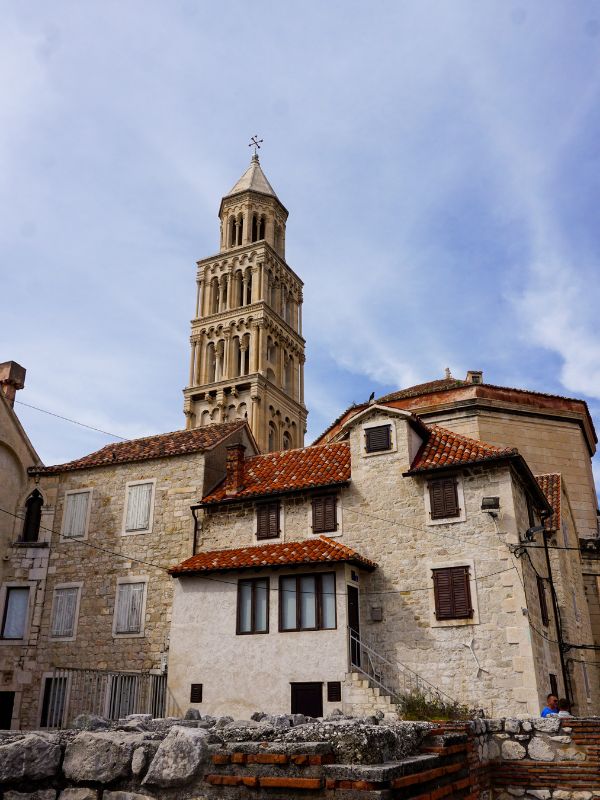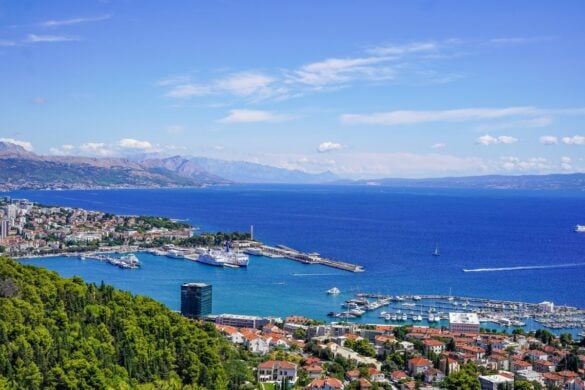Split caught me completely off guard. I’ve traveled a lot, but this place? It’s something else entirely. Imagine walking through streets where ancient Roman walls are just another part of daily life, where history isn’t locked up in museums but actually breathes around you.
When you’re hunting for the best things to do in Split, you’re in for a wild ride. The city’s crown jewel is the massive Diocletian’s Palace – a UNESCO site that’s way cooler in real life than in any guidebook. With the Adriatic sparkling nearby and centuries of stories packed into every corner, Split is the Croatia destination you didn’t know you needed.
Best Things to Do in Split
Ready to experience the best of Split? Wander through the ancient corridors of Diocletian’s Palace, a UNESCO-listed marvel filled with cafés, shops, and historic landmarks. Stroll along the vibrant Riva promenade, where the Adriatic breeze complements the city’s lively energy. Relax on the sun-drenched shores of Bačvice Beach, or take a boat trip to the nearby Dalmatian islands. Hike up Marjan Hill for panoramic city views, then unwind with fresh seafood and local wine at a waterfront konoba. Whether you’re here for history, adventure, or relaxation, Split offers an unforgettable mix of culture and coastal charm.

1. Diocletian’s Palace
Walking through Diocletian’s Palace feels like stepping into a time machine. Built in the 4th century for Emperor Diocletian, this UNESCO World Heritage site is now the heart of Split’s Old Town. Unlike typical ruins, the palace is a living city with narrow alleyways, courtyards, and ancient stone buildings turned into shops and cafés. Highlights include Peristyle Square, where costumed guards recreate Roman-era scenes, and the underground basements, now home to market stalls and exhibitions. Climbing the Bell Tower of Saint Domnius offers stunning city and Adriatic views.
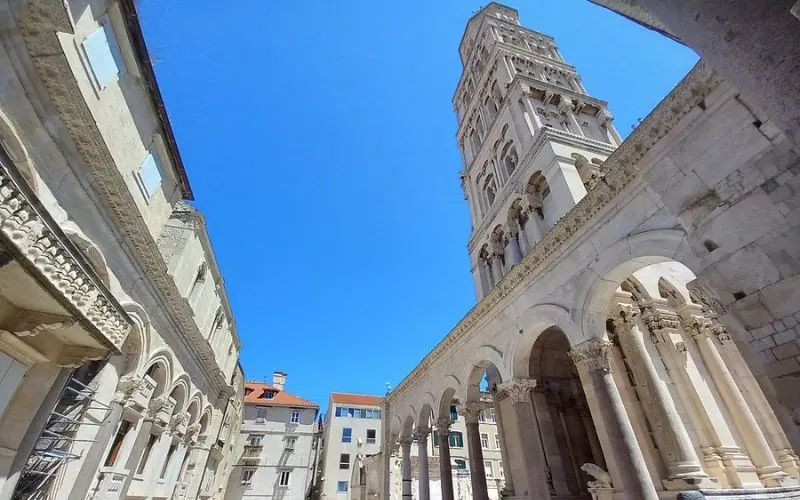
I explored the palace early in the morning when the streets were quiet, making it feel like a private tour. By midday, the atmosphere changed completely, with street musicians playing and cafés bustling. Whether you’re into history or local culture, Diocletian’s Palace is an unmissable stop in Split.
- A Split and Diocletian’s Palace walking tour covers Peristyle Square, the substructures, and Golden Gate with a guide.

2. Marjan Hill
For the best panoramic views of Split, head to Marjan Hill, often called the city’s “green lungs.” This forested park sits just west of the Old Town, offering a peaceful escape from the bustling streets. Well-marked trails lead to scenic viewpoints, historic chapels, and Telegrin Peak, the highest point with breathtaking Adriatic views. Along the way, you’ll find St. Jerome’s Church and Hermitage, built into the cliffs, adding a touch of history to your hike. If hiking isn’t your thing, you can also bike or take a relaxed stroll through this nature retreat.
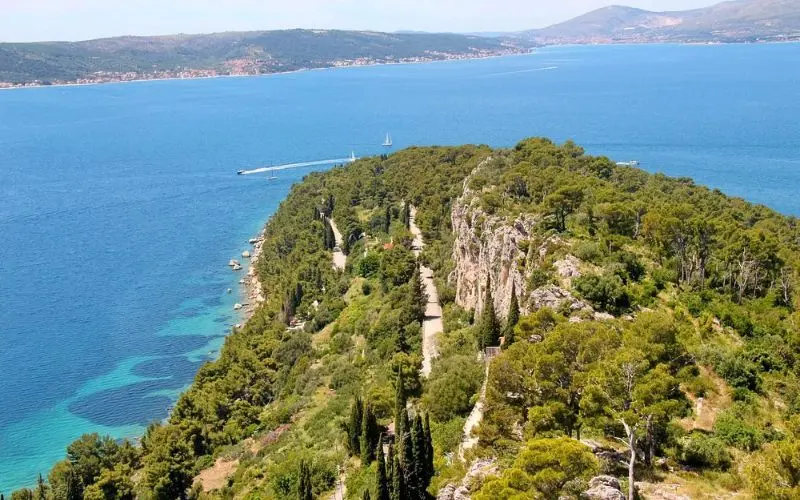
I took an early morning hike to avoid the heat, and the quiet paths made for a refreshing start. Reaching the summit, I was blown away by the sweeping views of Split, the islands, and the mountains beyond. Whether you’re a nature lover or just need a break from city life, Marjan Hill is worth the climb.

3. Riva Promenade
The Riva Promenade is the heartbeat of Split, stretching along the waterfront with palm trees, cafés, and stunning sea views. Lined with historic buildings and modern terraces, it’s the perfect place for a morning coffee, a sunset stroll, or some prime people-watching. Local vendors sell everything from souvenirs to fresh gelato, while street musicians add to the lively atmosphere. At night, the Riva transforms into a vibrant social hub, with bars and restaurants buzzing with energy.
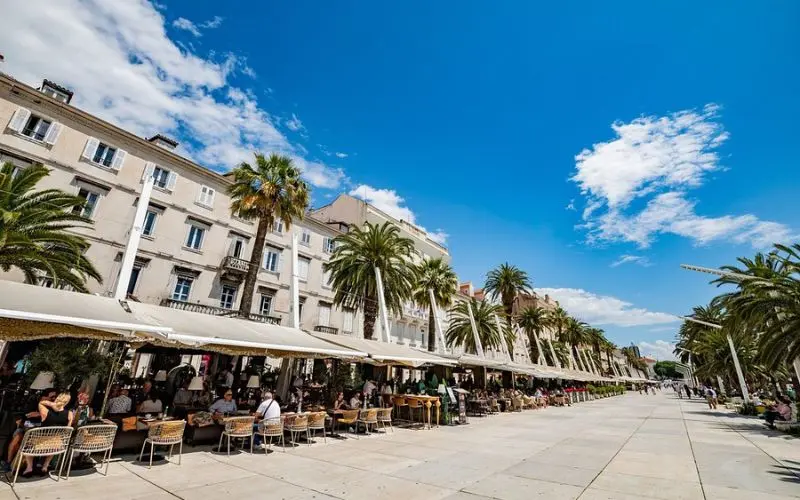
I grabbed a seat at a seaside café and watched ferries sail in and out of the harbor while sipping on a strong Croatian espresso. Whether you’re passing through on your way to Diocletian’s Palace or simply enjoying the relaxed Mediterranean vibe, the Riva is where Split comes to life. It’s the perfect spot to slow down and take in the city’s coastal charm.

4. Klis Fortress
Perched high above Split, Klis Fortress offers jaw-dropping views and a fascinating dive into medieval history. Once a key stronghold defending Dalmatia from invaders, this fortress has stood for centuries, with its stone walls and battlements still intact. Fans of Game of Thrones will recognize it as the filming location for Meereen, adding a cinematic touch to the visit. The small museum inside displays historical weapons, armor, and artifacts that tell the story of its military past.
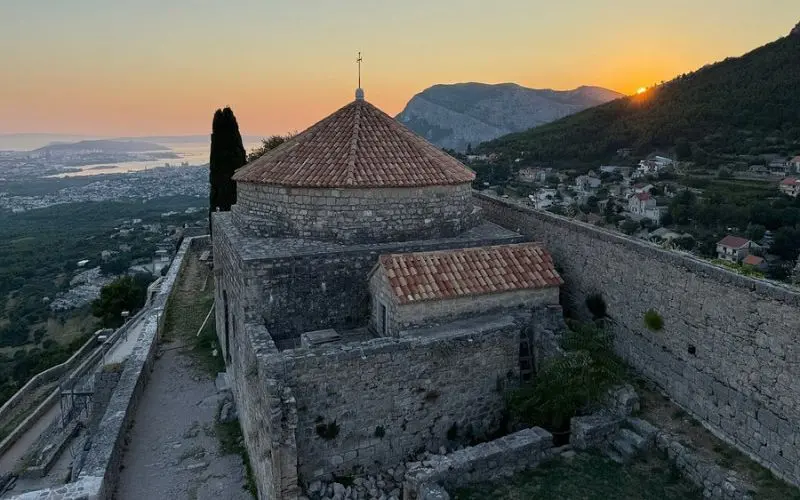
I visited on a clear afternoon, and the view over Split and the Adriatic was absolutely breathtaking. Walking through the fortress ruins, I could almost picture the battles fought here centuries ago. If you love history, epic landscapes, or just want a unique side trip from Split, Klis Fortress is well worth the short drive.
- This Klis Fortress and Olive Museum combo ticket includes admission to both with an olive oil tasting.
- Read Next: 12 Magical Things to Do in Croatia (History + Nature Spots)

5. Bačvice Beach
Bačvice Beach is Split’s most famous beach, known for its shallow waters and soft sand—something rare along Croatia’s rocky coastline. It’s the perfect spot to swim, sunbathe, or try picigin, a traditional Croatian game where players keep a small ball from touching the water. The beach is lined with cafés and bars, making it just as lively at night as during the day. If you’re looking for a more relaxed vibe, nearby Ovčice Beach offers a quieter alternative.
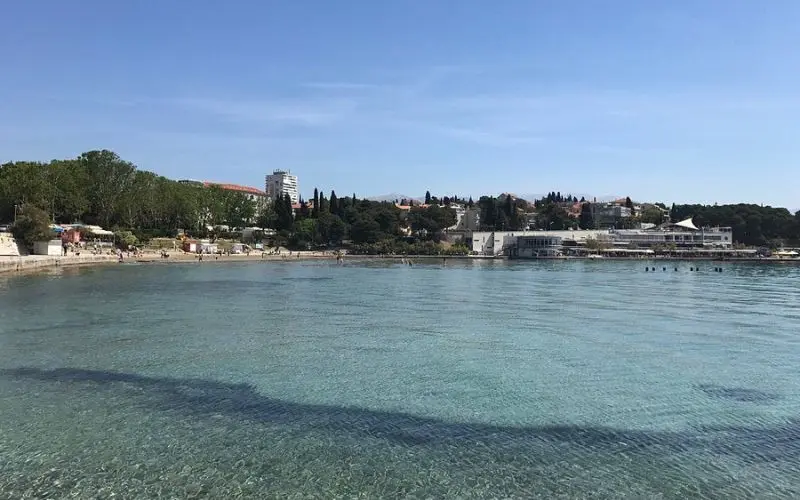
I spent an afternoon here, alternating between dips in the warm Adriatic and watching locals play picigin with impressive skill. Later, I grabbed a cold drink at a beachside bar and enjoyed the sunset over the sea. Whether you’re up for an active day or just want to unwind by the water, Bačvice Beach is the place to be.

6. The Split Archaeological Museum
The Split Archaeological Museum is the oldest museum in Croatia and a must-visit for history lovers. It houses an impressive collection of Roman, Greek, and early Christian artifacts, including ancient sculptures, mosaics, and jewelry. The museum’s highlight is the collection from Salona, a former Roman city near Split, featuring well-preserved stone reliefs and sarcophagi. Outside, the courtyard showcases ancient inscriptions and statues, making the visit feel like an open-air museum.
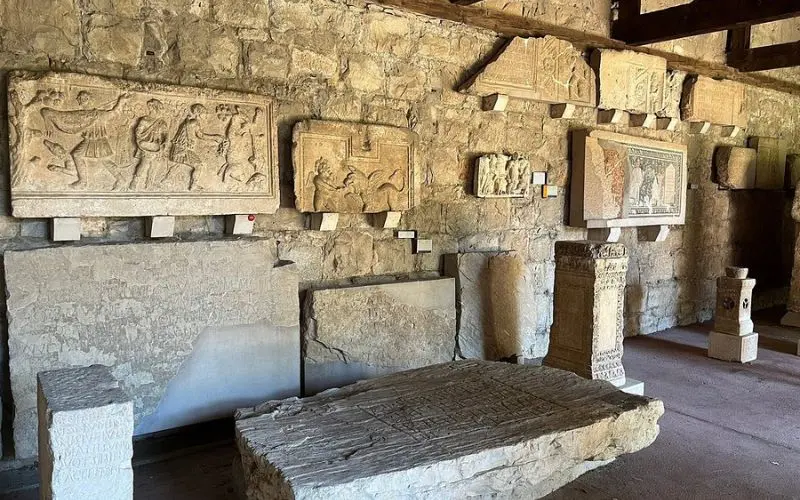
I wasn’t expecting to be so fascinated by the collection, but the artifacts gave a deeper perspective on Split’s ancient past. The exhibits are well-organized, and since it’s not as crowded as other attractions, it’s a great place to explore at your own pace. If you want to dive into the region’s rich history, this museum is a hidden gem.
✈️ My #1 Tip for Cheap Flights:
If you’re not using Going, you’re probably overpaying for flights. I’ve scored roundtrips to Europe for under $300 - and I never would’ve found them on Google Flights.
Their free version is great, but Premium is where the real magic happens. I recommend doing the 14-day free trial. And right now, you can get 25% off Premium or Elite with my code: JON25.
Seriously, it’s the best travel decision I’ve ever made (in 8+ years).

7. The Cathedral of Saint Domnius
Standing tall in the heart of Diocletian’s Palace, the Cathedral of Saint Domnius is one of the best-preserved Roman structures still in use today. Originally built as Emperor Diocletian’s mausoleum, it was later converted into a cathedral, blending Roman, Gothic, and Baroque styles. Inside, the wooden choir stalls and medieval altars showcase incredible craftsmanship, while the crypt and treasury hold relics dating back centuries. Climbing the bell tower is a must, offering panoramic views over Split’s rooftops.
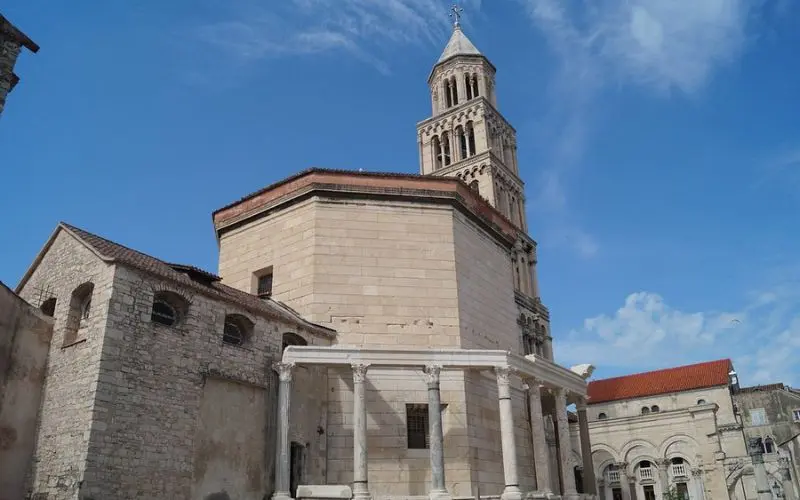
I visited in the late afternoon, and the golden light streaming through the stained glass added to the cathedral’s peaceful atmosphere. The steep climb up the bell tower was worth every step—watching the sunset over the Adriatic from the top was unforgettable. Whether for its history, architecture, or views, Saint Domnius Cathedral is one of Split’s standout landmarks.

8. Hvar Island
A short ferry ride from Split, Hvar Island is a dreamy escape known for its crystal-clear waters, historic sites, and lively nightlife. The island’s main town, Hvar Town, is filled with Venetian-style buildings, bustling squares, and the iconic Fortica Fortress, which offers stunning views over the Adriatic. For a quieter experience, visit Stari Grad, one of Croatia’s oldest settlements, or relax on the hidden beaches near Dubovica Bay. Wine lovers should check out the island’s famous vineyards, which produce some of Croatia’s best local wines.
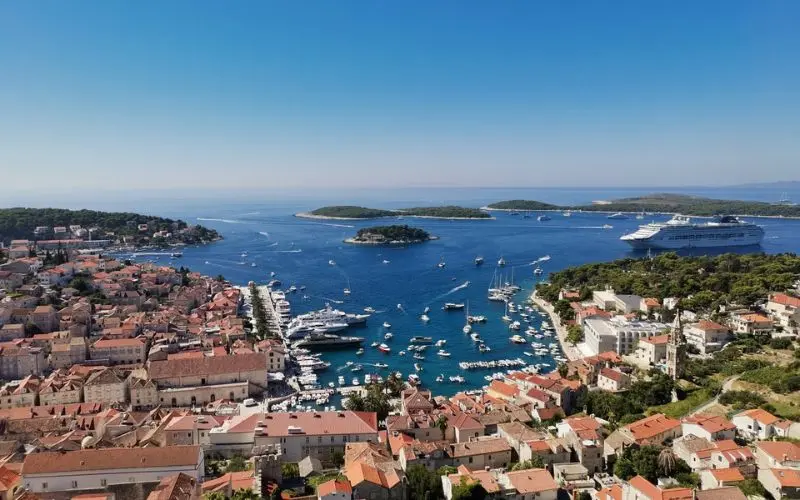
I spent a day wandering Hvar Town’s cobbled streets before hiking up to the fortress for breathtaking sea views. Later, I found a secluded cove and swam in some of the clearest water I’ve ever seen. With its mix of history, nightlife, and natural beauty, Hvar Island is an unforgettable side trip from Split.
- Rent a bike to cover more ground with this Hvar Island self-guided e-bike tour including map and helmet.
- Read Next: 12 Most Beautiful Places in Croatia to Visit (Wait Til You See #8!)

9. Varoš
One of the oldest neighborhoods in Split, Varoš is a charming maze of stone houses, narrow alleyways, and hidden courtyards. Once home to fishermen and laborers, this historic district still retains its authentic Dalmatian feel. Walking through Sinjska Street and its surrounding lanes, you’ll find small local taverns serving traditional dishes like pašticada and fresh seafood. Many of the homes here have been passed down for generations, adding to the area’s timeless character.
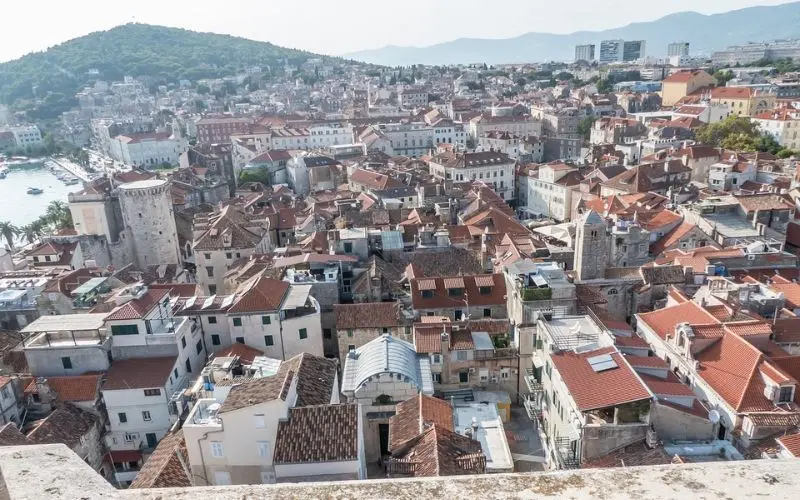
I took an evening walk through Varoš and loved how peaceful it felt compared to the busy Old Town. A few locals sat outside their homes, chatting over glasses of rakija, while the scent of grilled fish filled the air. If you want to experience Split’s traditional side away from the tourist crowds, Varoš is the perfect place to explore.

10. Split’s Green Market (Pazar)
For a true taste of local life, head to Pazar, Split’s bustling Green Market located just east of Diocletian’s Palace. Vendors sell everything from fresh fruits, vegetables, and homemade cheeses to cured meats and olive oil. You’ll also find stalls selling dried lavender, local honey, and handmade souvenirs, making it a great spot for both grocery shopping and unique gifts. The energy here is lively, with vendors enthusiastically calling out their daily specials.

I stopped by one morning and grabbed some juicy figs and a wedge of Paški sir, a famous Croatian sheep’s cheese. Watching locals haggle over produce and chat with their favorite sellers made it clear that Pazar is more than just a market—it’s a community hub. If you want an authentic, flavorful experience, Pazar is a must-visit in Split.

11. Mestrovic Gallery
Dedicated to Croatia’s most famous sculptor, Ivan Meštrović, the Mestrovic Gallery is an essential stop for art lovers. Housed in a stunning villa overlooking the Adriatic, the museum showcases Meštrović’s best works, including sculptures, sketches, and architectural designs. The outdoor garden features impressive stone statues, with a peaceful setting that enhances the experience. Nearby, you can also visit Kaštelet, a chapel containing his famous wooden reliefs of Christ’s life, making it a unique addition to the gallery visit.
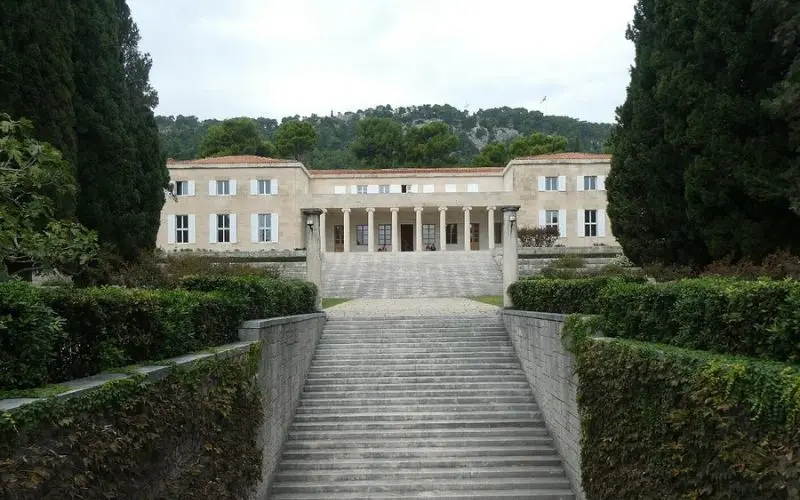
I wasn’t familiar with Meštrović before visiting, but the sheer beauty of his sculptures made an instant impression. The gallery’s setting—calm, elegant, and filled with sea views—made it one of the most relaxing places I visited in Split. If you appreciate art, history, or simply want a break from the city crowds, the Mestrovic Gallery is well worth your time and offers a deeper look into Croatia’s artistic heritage.

12. Salona Ruins
Just a 15-minute drive from Split, the Salona Ruins are a must-visit for history lovers. Once the capital of the Roman province of Dalmatia, Salona was a bustling Roman city with an estimated population of 60,000. Today, its remains include a large amphitheater, city walls, early Christian basilicas, and intricate mosaics. Walking through these ruins offers a glimpse into the grandeur of ancient Roman life and its religious significance. Unlike crowded historic sites, Salona provides a quiet, immersive experience where you can explore at your own pace.
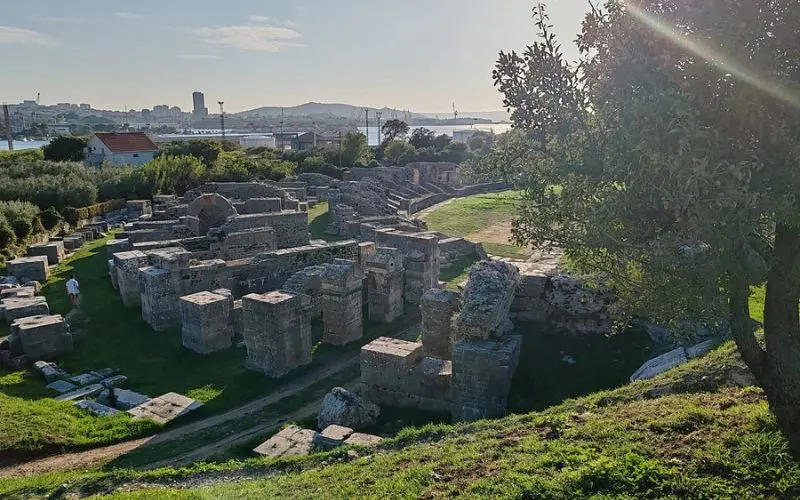
I visited in the late afternoon when the site was nearly empty, making it feel like I had a personal connection to history. The detailed ruins and peaceful setting made it one of the most memorable historic sites near Split. If you love Roman history, Salona Ruins are a fantastic, crowd-free alternative to Split’s busier landmarks.

